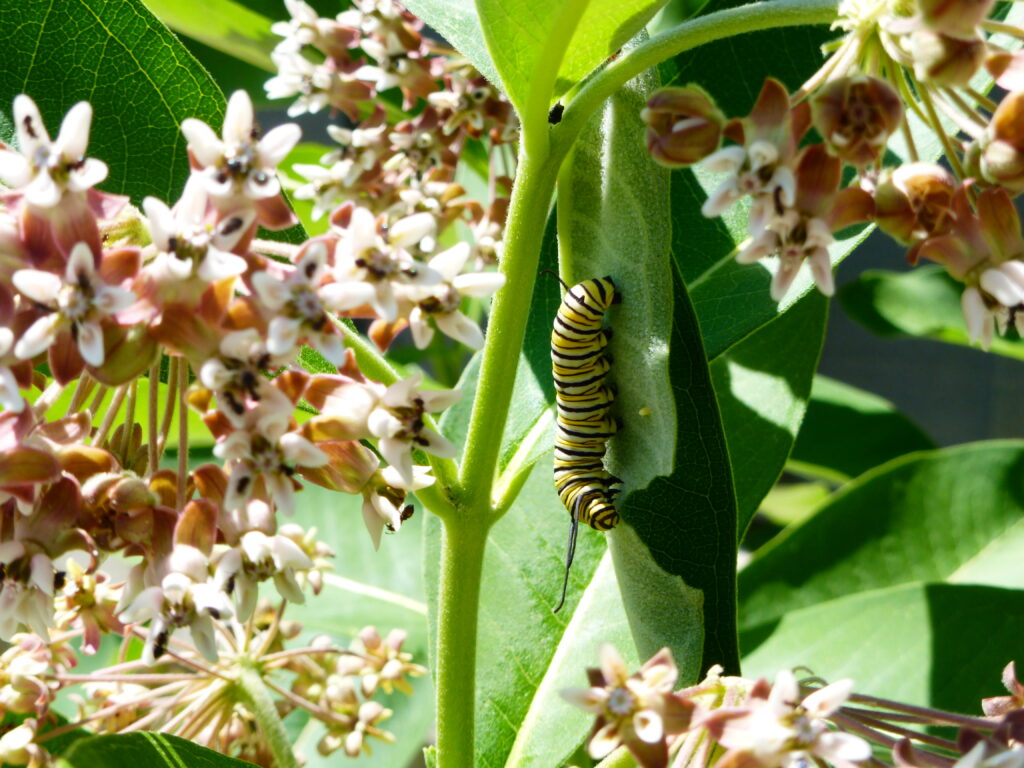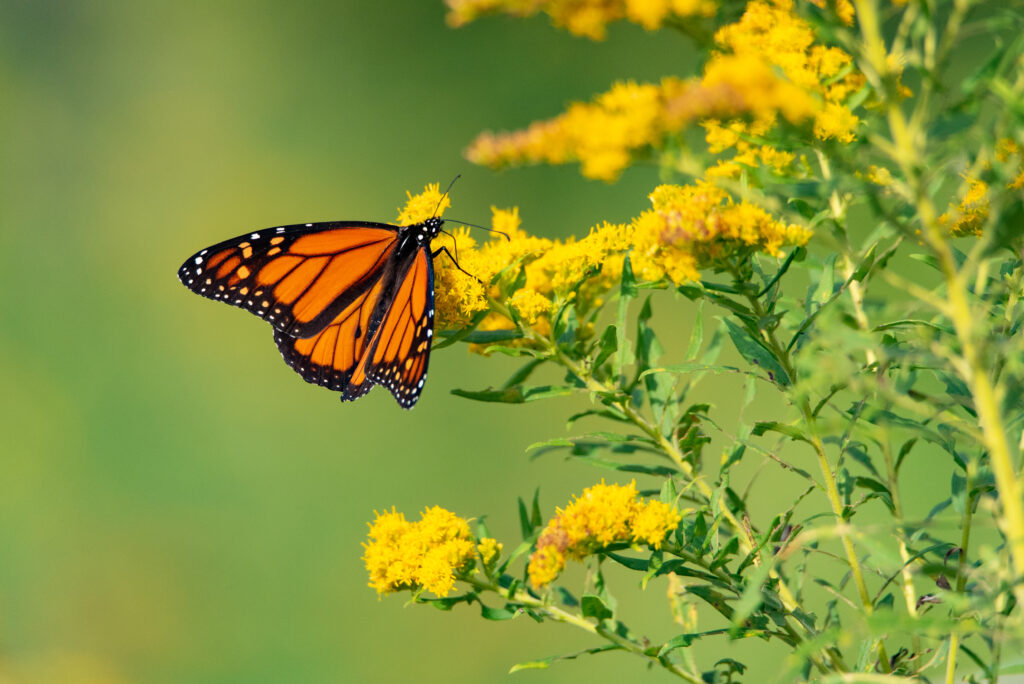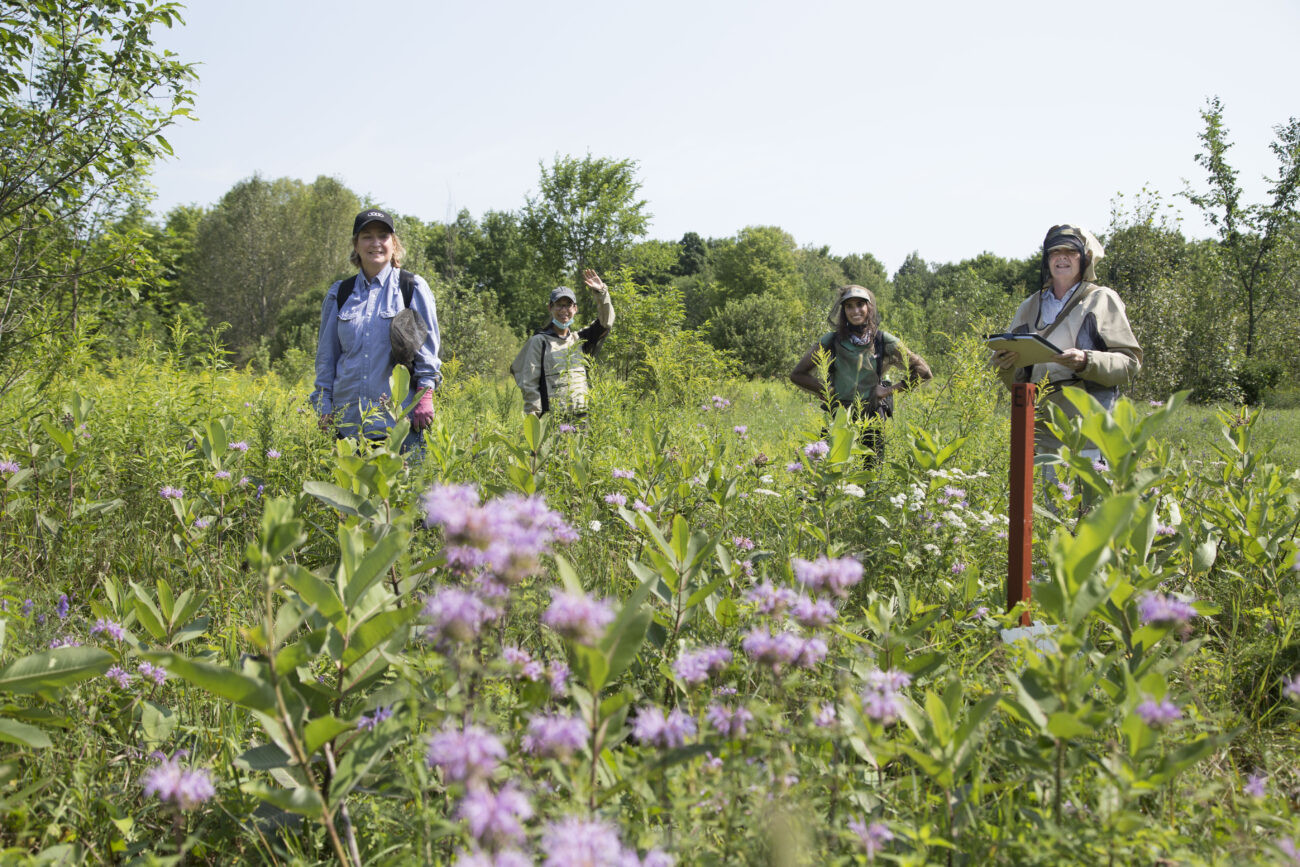Throughout the Summer months, you might see Monarch Butterflies sunning themselves on warm sidewalks, spiralling through the air in courtship displays, or sipping nectar from flowers like Asters and Goldenrod. The sight of these vibrant butterflies has grown less common in recent years, however, as Monarch populations continue to decline (by an estimated 80% in Eastern North America, as compared to populations in the 1990’s).
The reasons for this decline are complex, and intensified by the Monarch’s intricate lifecycle. Unlike many other butterflies, the Monarch relies on a single hostplant species—Milkweed—to lay its eggs and raise its caterpillars. This means that their populations are reliant on Milkweed, and when Milkweed numbers decline (as they have substantially in recent years), so do Monarchs. Long migration routes and limited overwintering sites are other factors in the Monarch’s vulnerability to environmental changes. Other primary issues impacting Monarch populations are habitat loss along their migratory routes, herbicide and pesticide use, and the disruption of their migratory patterns due to extreme weather events and the effects of climate change.



In light of the Monarch’s declining population and classification as a Species at Risk in Ontario, the Couchiching Conservancy monitors both Monarch and Milkweed presence on our nature reserves! Every Summer (since 2021), volunteers visit multiple Milkweed patches to record signs of Monarch butterflies (including eggs, caterpillars, and adult butterflies!). This requires training, and keen eyes—for Monarch eggs can be as small as the tip of a pencil! Caterpillars also go through five different stages, defined by changing physical traits. These stages are known as Instars! While size is the most obvious change between instars, other characteristics like the visibility of a caterpillar’s tentacles and the brightness of its stripes can also help distinguish between them.
This Summer, eight Conservancy volunteers have been hard at work visiting four Milkweed patches (including one just adjacent to the Couchiching Conservancy’s office, on Grant’s Woods Nature Reserve!). The information on the number of Monarchs recorded at these Milkweed patches will be submitted to Mission Monarch, where it will help contribute to knowledge of the overall trends in Monarch populations in the region. Tracking trends and sharing data on Species at Risk across regions is also vital in order to tailor future conservation efforts to best support them!
Monarch Monitoring is one of over 20 volunteer programs the Couchiching Conservancy runs with the aims of stewarding the land we protect for generations to come! There are many ways to get involved, from visiting our nature reserve, to joining in our Passport to Nature events, or becoming a member. You can also follow us on social media to stay up to date about future highlights of our Monarch Monitoring program!

